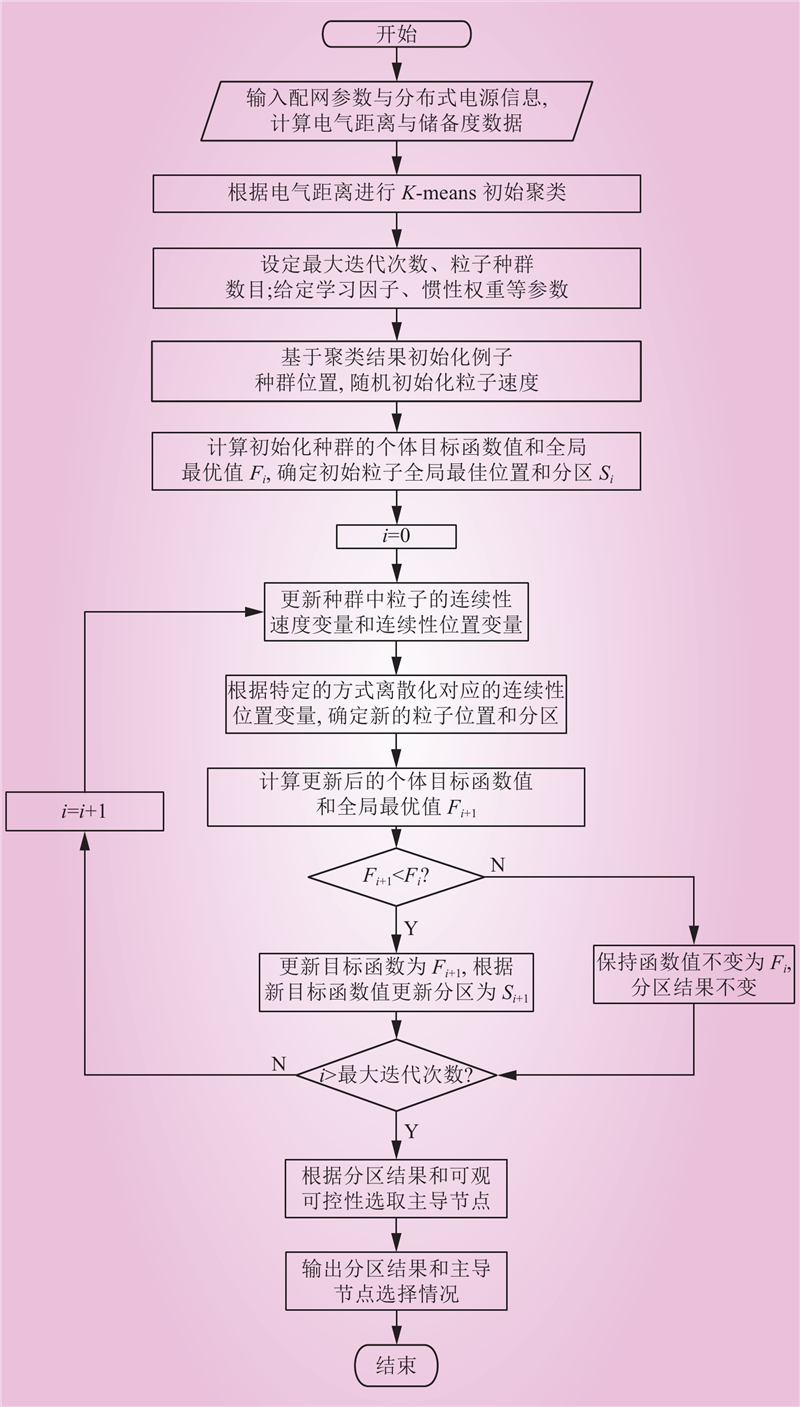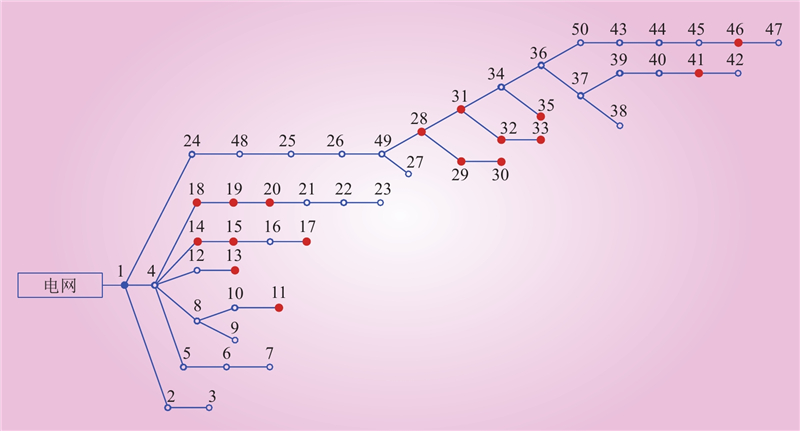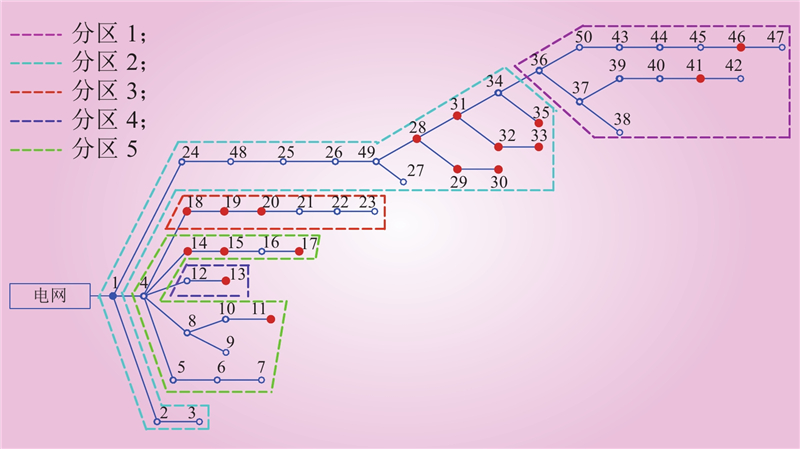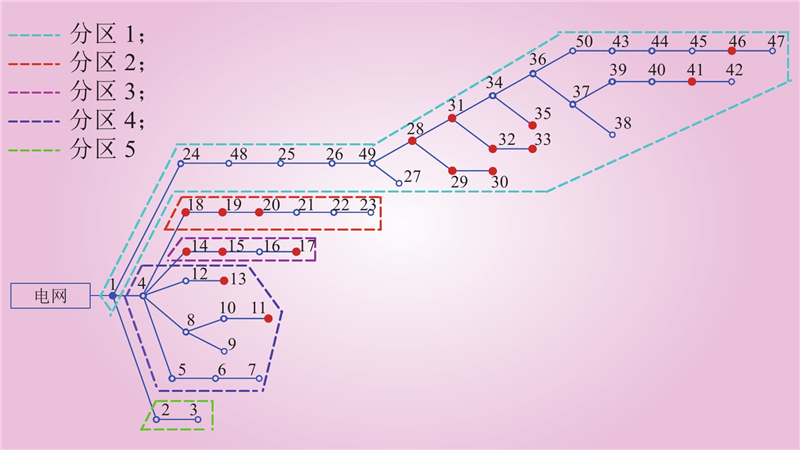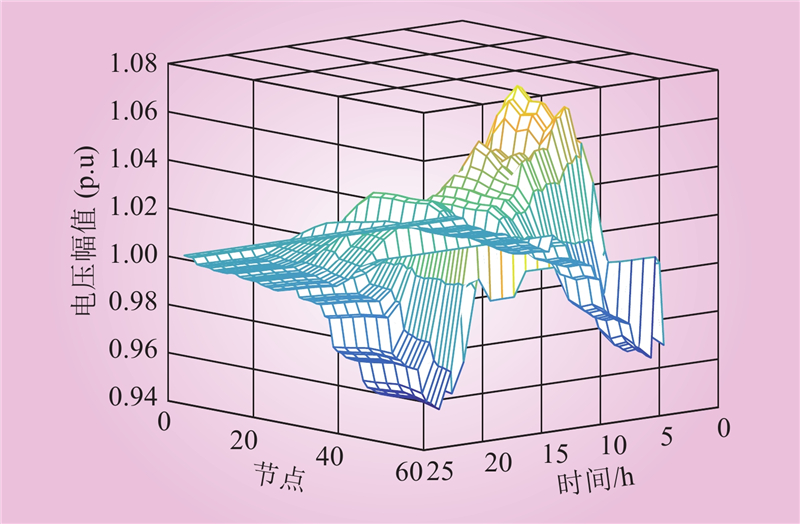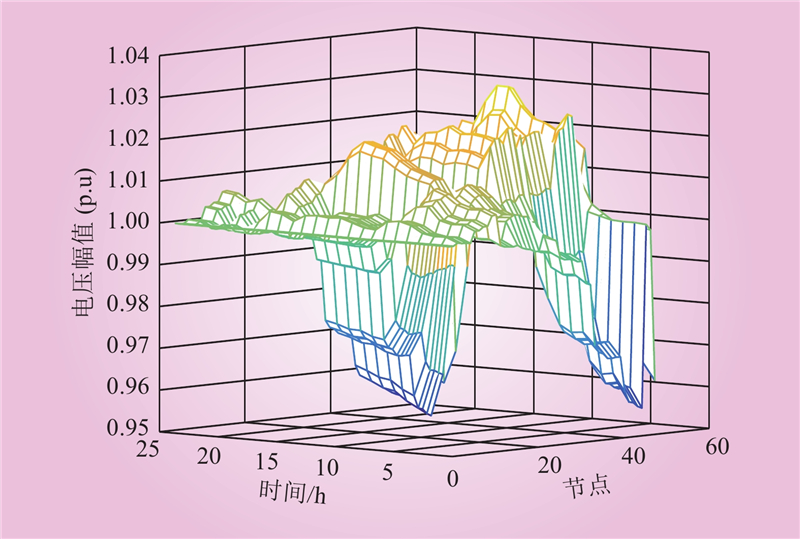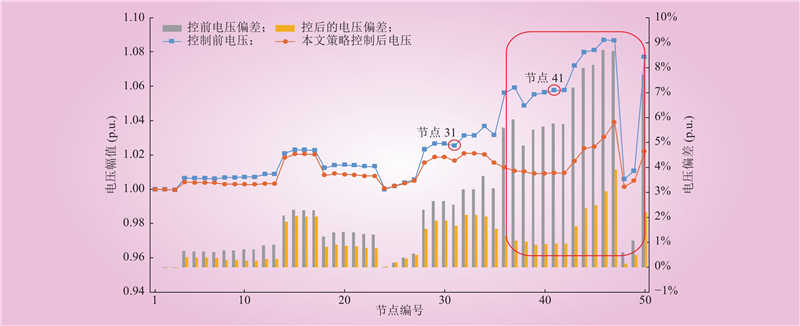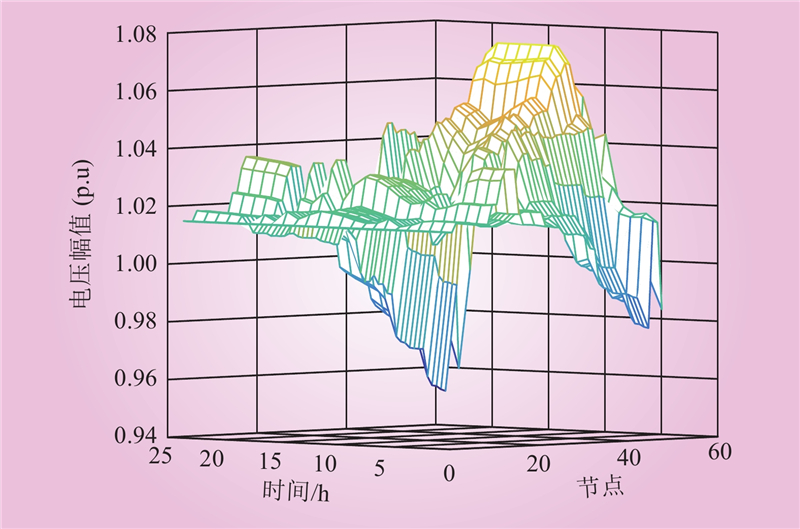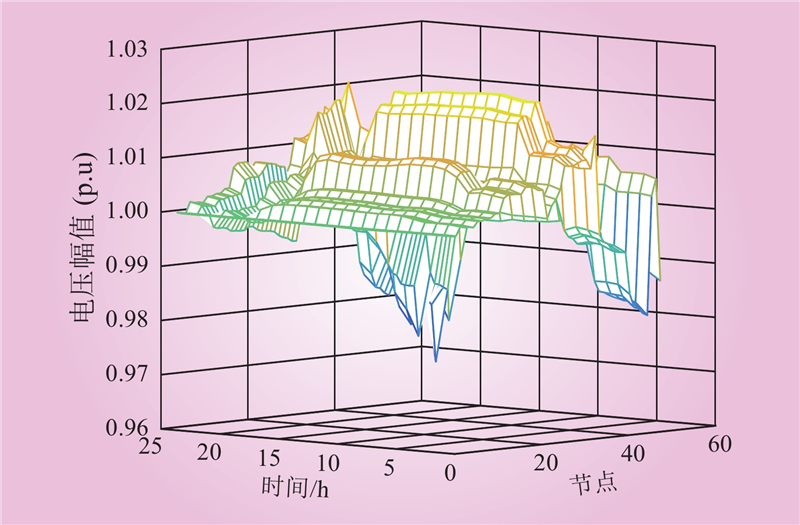| 1 |
国家能源局综合司. 关于公布整县(市、区)屋顶分布式光伏开发试点名单的通知(国能综通新能〔2021〕84号)[Z
|
| 2 |
2022年光伏发电建设运行情况[EB/OL]. (2023-02-17) [2023-02-17]. http://www.nea.gov.cn/2023-02 /17 /c_1310698128.htm.
|
| 3 |
杨悦, 陈宇航, 成龙, 等. 考虑节点功率储备与GIN中心性的主动配电网动态集群电压控制[J/OL]. 电网技术: 1–13.[2023-06-25]. DOI: 10.13335/j.1000–3673.pst.2022.2520.
|
|
YANG Yue, CHEN Yuhang, CHENG Long, et al. Power reserve and GIN centrality of buses considered dynamic cluster voltage control of active distribution networks[J/OL]. Power System Technology: 1–13[2023-06-25]. DOI:10.13335/j.1000–3673.pst.2022.2520.
|
| 4 |
时珉, 尹瑞, 姜卫同, 等. 分布式光伏灵活并网集群调控技术综述[J]. 电测与仪表, 2021, 58 (12): 1- 9.
|
|
SHI Min, YIN Rui, JIANG Weitong, et al. Overview of flexible grid-connected cluster control technology for distributed photovoltaic[J]. Electrical Measurement & Instrumentation, 2021, 58 (12): 1- 9.
|
| 5 |
郑吉祥, 钟俊. 基于节点类型和分区耦合性的复杂网络无功电压快速分区方法[J]. 电网技术, 2020, 44 (1): 223- 230.
|
|
ZHENG Jixiang, ZHONG Jun. Fast partitioning method of reactive power and voltage in complex networks based on node type and partition coupling[J]. Power System Technology, 2020, 44 (1): 223- 230.
|
| 6 |
CHAI Y, GUO L, WANG C, et al. Network partition and voltage coordination control for distribution networks with high penetration of distributed PV units[J]. IEEE Transactions on Power Systems, 2018: 3396–3407.
|
| 7 |
RUAN H, LIU Y, GAO H, et al. Distributed voltage control in active distribution network considering renewable energy: a novel network partitioning method[J]. IEEE Transactions on Power Systems, 2020, PP(99): 1–1.
|
| 8 |
李晓辉, 谭向红, 张轶君, 等. 基于最大供电能力的配电网分区方法[J]. 中国电力, 2017, 50 (3): 117- 123.
|
|
LI Xiaohui, TAN Xianghong, ZHANG Yijun, et al. A distribution network partition method based on total supply capability[J]. Electric Power, 2017, 50 (3): 117- 123.
|
| 9 |
陈明, 顾伟, 李鹏, 等. 主动配电网分区分布式无功优化控制方法[J]. 现代电力, 2017, 34 (6): 40- 44.
|
|
CHEN Ming, GU Wei, LI Peng, et al. Distributed reactive power optimization control method for active distribution network based on subarea division[J]. Modern Electric Power, 2017, 34 (6): 40- 44.
|
| 10 |
余乐, 张茜, 刘燕, 等. 含分布式电源的配电网无功补偿分区平衡优化调节方法[J]. 电力系统保护与控制, 2017, 45 (5): 58- 64.
|
|
YU Le, ZHANG Qian, LIU Yan, et al. An adjustment method of distribution network reactive power compensation partition balance with distributed power sources[J]. Power System Protection and Control, 2017, 45 (5): 58- 64.
|
| 11 |
王育飞, 陈强, 郑云平, 等. 基于动态无功电压灵敏度的有源配电网移动式储能优化调度[J]. 电力自动化设备, 2023, 43 (2): 29- 35, 59.
|
|
WANG Yufei, CHEN Qiang, ZHENG Yunping, et al. Optimal scheduling of mobile energy storage in active distribution network based on dynamic reactive power and voltage sensitivity[J]. Electric Power Automation Equipment, 2023, 43 (2): 29- 35, 59.
|
| 12 |
李建芳, 张路, 宋晓辉, 等. 含高渗透率分布式电源的配电网多目标无功分区及主导节点选择方法[J]. 可再生能源, 2017, 35 (11): 1664- 1671.
|
|
LI Jianfang, ZHANG Lu, SONG Xiaohui, et al. Multi-objective reactive power partitioning and pilot node selection of distribution network with high penetration of DG[J]. Renewable Energy Resources, 2017, 35 (11): 1664- 1671.
|
| 13 |
窦晓波, 常莉敏, 倪春花, 等. 面向分布式光伏虚拟集群的有源配电网多级调控[J]. 电力系统自动化, 2018, 42 (3): 21- 31.
|
|
DOU Xiaobo, CHANG Limin, NI Chunhua, et al. Multi-level dispatching and control of active distribution network for virtual cluster of distributed photovoltaic[J]. Automation of Electric Power Systems, 2018, 42 (3): 21- 31.
|
| 14 |
钟俊, 焦兴伟, 王志川. 基于电压临界稳定状态下的无功电压分区方法[J]. 电网技术, 2019, 43 (10): 3761- 3768.
|
|
ZHONG Jun, JIAO Xingwei, WANG Zhichuan. Reactive voltage partition method based on voltage critical steady state[J]. Power System Technology, 2019, 43 (10): 3761- 3768.
|
| 15 |
胡雪凯, 尹瑞, 时珉, 等. 基于改进粒子群算法的分布式光伏集群划分与无功优化策略[J]. 电力电容器与无功补偿, 2021, 42 (4): 14- 2.
|
|
HU Xuekai, YIN Rui, SHI Min, et al. Distributed photovoltaic cluster partition and reactive power optimization strategy based on improved particle swarm optimization algorithm[J]. Power Capacitor & Reactive Power Compensation, 2021, 42 (4): 14- 2.
|
| 16 |
李香龙, 付晓, 朱洁, 等. 含分布式电源的配电网分区和主导节点选取方法研究[J]. 电力系统保护与控制, 2019, 47 (13): 24- 29.
|
|
LI Xianglong, FU Xiao, ZHU Jie, et al. Research on partition method and selection of dominant nodes for distribution network with distributed generation[J]. Power System Protection and Control, 2019, 47 (13): 24- 29.
|
| 17 |
汪泽州, 张明明, 钱峰强, 等. 含光伏接入的中压配电网集中调控优化策略[J]. 中国电力, 2023, 56 (2): 15- 22.
|
|
WANG Zezhou, ZHANG Mingming, QIAN Fengqiang, et al. Centralized regulation and optimization strategy for MV distribution network with PV integration[J]. Electric Power, 2023, 56 (2): 15- 22.
|
| 18 |
李军徽, 孙大朋, 朱星旭, 等. 光伏高渗透率下分布式储能群间协同的电压控制策略[J]. 电力系统自动化, 2023, 47 (10): 47- 56.
|
|
LI Junhui, SUN Dapeng, ZHU Xingxu, et al. Voltage regulation strategy for distributed energy storage considering coordination among clusters with high penetration of photovoltaics[J]. Automation of Electric Power Systems, 2023, 47 (10): 47- 56.
|
| 19 |
张杰, 王恒凤, 刘生春, 等. 基于内点法和邻域搜索解耦动态规划法的区域电网动态无功优化方法[J]. 中国电力, 2023, 56 (2): 59- 67.
|
|
ZHANG Jie, WANG Hengfeng, LIU Shengchun, et al. Algorithm for dynamic reactive power optimization of regional power grid based on interior point method and neighborhood search decoupling dynamic programming method[J]. Electric Power, 2023, 56 (2): 59- 67.
|
| 20 |
WANG Z G, WANG Y Z, LIU G W, et al. Fast distributed voltage control for PV generation clusters based on approximate Newton method[J]. IEEE Transactions on Sustainable Energy, 2021, 12 (1): 612- 622.
DOI
|
| 21 |
祖其武, 牛玉刚, 陈蓓. 基于改进粒子群算法的微网多目标经济运行策略研究[J]. 电力系统保护与控制, 2017, 45 (14): 57- 63.
|
|
ZU Qiwu, NIU Yugang, CHEN Bei. Study on multi-objective economic operating strategy of microgrid based on improved particle swarm optimization algorithm[J]. Power System Protection and Control, 2017, 45 (14): 57- 63.
|
| 22 |
叶畅, 伊华茂, 朱炯达, 等. 考虑灵活性供需平衡及响应速度的分布式电源集群划分方法[J]. 中国电力, 2023, 56 (2): 150- 156.
|
|
YE Chang, YI Huamao, ZHU Jiongda, et al. A cluster partition method for distributed generation considering flexibility supply-demand balance and response speed[J]. Electric Power, 2023, 56 (2): 150- 156.
|
| 23 |
于琳, 孙莹, 徐然, 等. 改进粒子群优化算法及其在电网无功分区中的应用[J]. 电力系统自动化, 2017, 41 (3): 89- 95, 128.
|
|
YU Lin, SUN Ying, XU Ran, et al. Vibration signal based diagnosis method for looseness fault of transformer winding[J]. Automation of Electric Power Systems, 2017, 41 (3): 89- 95, 128.
|
| 24 |
闫群民, 董新洲, 穆佳豪, 等. 基于改进多目标粒子群算法的有源配电网储能优化配置[J]. 电力系统保护与控制, 2022, 50 (10): 11- 19.
DOI
|
|
YAN Qunmin, DONG Xinzhou, MU Jiahao, et al. Optimal configuration of energy storage in an active distribution network based on improved multi-objective particle swarm optimization[J]. Power system protection and control, 2022, 50 (10): 11- 19.
DOI
|
| 25 |
国家标准化管理委员会. 电力系统电压和无功电力技术导则: GB/T 40427—2021 [S]. 北京: 中国标准出版社, 2022.
|


